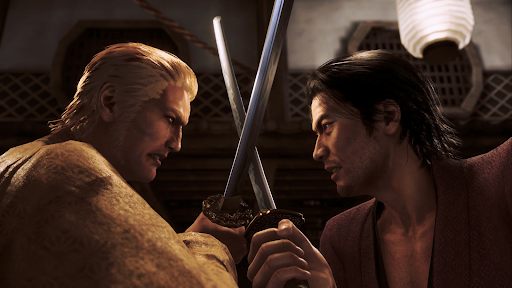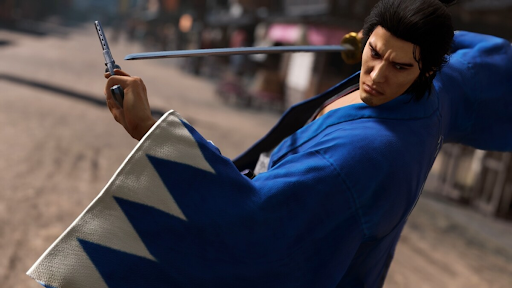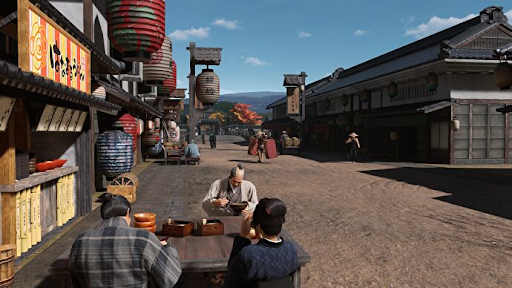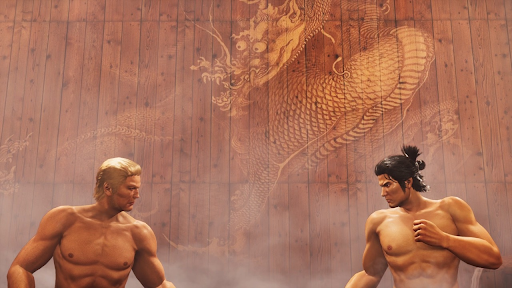Like a Dragon: Ishin!: Game Review

The Yakuza franchise was known for its faces, voices, and over-the-top theatrics. If you take all this and reel it back to 19th-century Japan, the result is Like a Dragon: Ishin! Like A Dragon: Ishin! is an enticing period piece that also includes the series’ action-brawler gameplay and ridiculous hijinx.
Ishin is yet another example of what developer RGG Studio does best: create melodramatic storytelling with the context of swapping the gangs of the modern criminal underworld for political factions in a tumultuous time in history.
Like a Dragon: Ishin! is a remake of the PS3-era game of the same name, but it has some notable updates. The original game, Yakuza: Ishin, came out in 2014, although it was not previously localised and brought to the West like other entries in the franchise.
The new version of the game lands somewhere between a remaster and a remake. It is based on older iterations of Yakuza games, which makes Like A Dragon: Ishin feels dated in several respects, particularly in moment-to-moment gameplay. The fundamentals of the remake are solid, and the main draws of the franchise remain intact. Let’s take a look at how the game pans out.
Storyline
Like a Dragon: Ishin takes place during the infamous Bakumatsu period of Japan’s history, set between 1853-1867 as part of the late Edo period. During this time, Japan was ruled by the feudal Tokugawa shogunate, which was known for its isolationist foreign policy and militaristic control of the country through daimyo warlords and the samurai.
In opposition to the shogunate was a faction of imperial loyalists called the Ishin Shishi, who sought to overthrow the military dictatorship and restore Japan’s rightful emperor to the throne.
The shogunate then goes on to employ the elite Shinsegumi police force to quell the growing opposition of the Ishin Shishi, which leads to the events of Like a Dragon: Ishin. In the game, Sakamoto Ryoma is affiliated with the faction, being from the Ishin Shishi-controlled region of Tosa on the southern coast of Japan’s Shikoku island.
When his adoptive father is assassinated, he goes undercover as a member of the Shinsegumi using the name Saito Hajime in order to find out the truth of his father’s death.

Sakamoto Ryoma, the protagonist of Like a Dragon: Ishin
The game is set in the streets of a fictionalised version of the city of Kyoto, Kyo. Ryoma will have to navigate the harsh political climate that sees the Shinsengumi and Ishin Shishi clash as he investigates who among the police could have killed his father.
Reeling back to history, Tension between the Shinsengumi and Ishin Shishi culminated in the 1864 Ikedaya incident, a riot in Kyoto that saw battle erupt between the two factions, resulting in heavy casualties.
It’s clear there are a lot of historical details Like a Dragon: Ishin has to pull from in its story of murder and political intrigue during this time of great change in Japan’s history.
However, it takes a bit of time to get the ball rolling and see the storyline clearly. It wasn’t until about 8 hours in, around the halfway point, that the various pieces fell into place and the story became clearer.
It drops a lot on you, frontloading the story by establishing factions, political terminology, and the deep cast in a way that can be tough to follow if you’re not already familiar with Edo period history. Ishin is ambitious in that way, trusting that you can keep up and track the things it throws at you.
The first half sort of spins its wheels before having real consequences and character motivations take centre stage. If you’ve played too many of these games, you won’t be completely surprised by their plot twists at this point, but time after time, Yakuza games still activate those good brain chemicals with their cinematic storytelling panache, and Ishin is no exception.
Graphics and Environment
19th-century Kyoto’s woodland surroundings make for a nice and fresh change of scenery from the bustling urban jungle of present-day Tokyo. Much like Kamurocho, it’s arguably best experienced at night, when trading neon-soaked streets littered with drunken locals for lantern-lit lanes gives the city a retro Japanese era vibe.
However, Ishin’s small slice of Japan’s original capital city is not without its standout sections, such as the bustling marketplace lining the canals in the Fushimi district.
The game is full of various activities that fill the streets of Kyo. Signatures like rhythm-based karaoke feature a playlist of bangers that has Ryoma on stage singing his heart out to a crowd of bar patrons—good old “Baka Mitai” gets another goofy rendition here.
The fan-dancing minigame and substory could have you sinking even more time into chaining combos to some catchy Japanese folk tunes as Ryoma showcases his elegant traditional moves.

Scene from the city of Kyo
You have the ability to farm, fish, and cook. As you harvest fruits and veggies, and reel in more fish from the rivers and open seas, you can cook more dishes. Cooking is accomplished through the use of cute little minigames that reward you with food as well as powerful healing items and extra money if you want to fulfil food delivery requests.
It’s also how you connect with Ryoma’s adopted daughter, Haruka, who is essentially the same character as in the mainline games.
Combat and Gameplay
As with any other Yakuza game, the rustic riverside streets aren’t just meant for sightseeing but also fight-spreeing, and Like a Dragon: Ishin! introduces a blend of blades and bullets that makes its combat feel refreshingly distinct from other entries in the series for the most part.
Ryoma has four different fighting stances that you can switch between on the fly, allowing you to go from the smash and bash of the barehanded brawler technique to the slash and dash of the swordsman style with a tap of the D-pad. They vary in usefulness.
The Wild Dancer style happens to be the most fun and reliable combat stance in Like a Dragon: Ishin! Wild Dancer finds Ryoma at his most fleet-footed, composed of a combination of fast sword slashes and a spinning blast of gunfire that’s excellent for crowd control, along with a twirling evade move that can be chained together to pinball him out of harm’s way and into a position of power.

Ryoma has four different fighting stances
The fact that its faster attacks came at the cost of dealing slightly less damage overall made it less effective against the more brutish bosses. The game has a flexible upgrade system that rewards you for using different stances and lets you add perks like new, devastating Heat Actions—the series’ signature cinematic finishers—or extended combos as you level up.
Dojos throughout Kyo have their own little stories and unlock more options to get the most out of your stances, and trooper cards act as special abilities that either provide buffs or magic-like attacks. It all blends in well with the atmosphere of the game.
This new version of Ishin stays true to the original game, which was released in 2014. It has the same gameplay foundation as the previous entries in the series. So, despite being rebuilt on Unreal Engine 4, it plays similarly to Yakuza 0 and Yakuza Kiwami.
However, that’s a noticeable step back after five other entries in the modernised Dragon Engine—especially coming off the latest in Lost Judgment, which featured the best brawler combat system RGG has made thus far. Playing through Ishin, it’s clear how much the series has evolved, with better fluidity of movement, and how that manifests in a more robust combat experience.
Verdict
Like A Dragon: Ishin is a fascinating part of the RGG Studio catalogue. It creatively blends the characters and drama of Yakuza lore with a period piece set during a turbulent time in Japanese history. By virtue of its brand of storytelling, Ishin forgoes some of the tropes that glorify samurai but rides that line ever so closely.
The revision uses an older foundation that shows its age, and it is nice to finally have a version of the game that has been tidied up for modern platforms.
